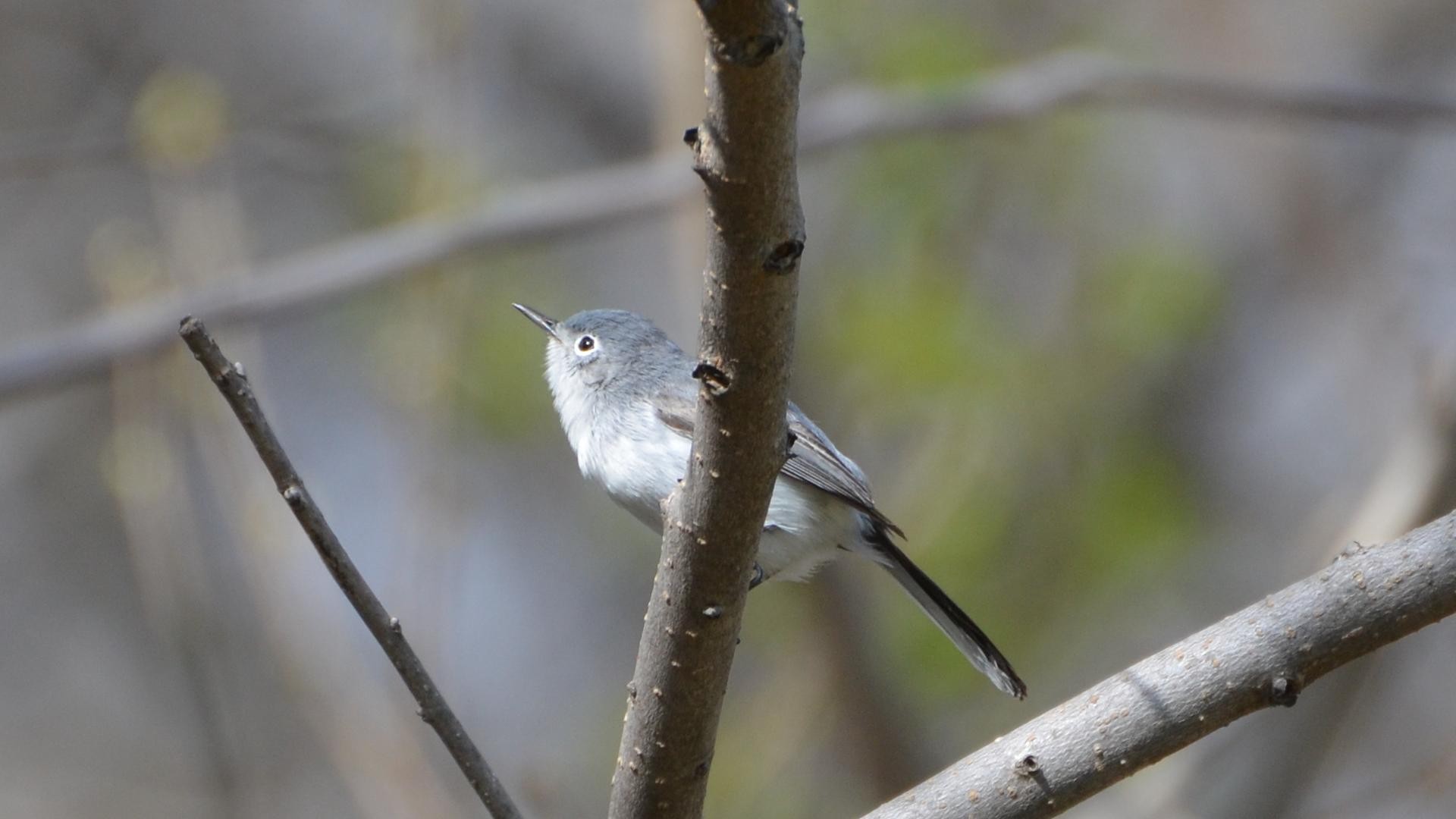Blue-grey Gnatcatcher
A species of Gnatcatchers, Also known as Blue-grey Flycatcher Scientific name : Polioptila caerulea Genus : Gnatcatchers
Blue-grey Gnatcatcher, A species of Gnatcatchers
Also known as:
Blue-grey Flycatcher
Botanical name: Polioptila caerulea
Genus: Gnatcatchers
Content
Description People often ask General Info
 Photo By Andy Reago & Chrissy McClarren , used under CC-BY-2.0 /Cropped and compressed from original
Photo By Andy Reago & Chrissy McClarren , used under CC-BY-2.0 /Cropped and compressed from original Description
The blue-gray gnatcatcher or blue-grey gnatcatcher (Polioptila caerulea) is a very small songbird, 10–13 cm (3.9–5.1 in) in length, 6.3 in (16 cm) in wingspan, and weighing only 5–7 g (0.18–0.25 oz). Adult males are blue-gray on the upperparts with white underparts, have a slender dark bill, and a long black tail edged in white. Females are less blue, while juveniles are greenish-gray. Both sexes have a white eye ring. The blue-gray gnatcatcher's breeding habitat includes open deciduous woods and shrublands in southern Ontario, the eastern and southwestern United States, and Mexico. Though gnatcatcher species are common and increasing in number while expanding to the northeast, it is the only one to breed in Eastern North America. Both parents build a cone-like nest on a horizontal tree branch, and share feeding the young. The incubation period is 13 days for both sexes, and two broods may be raised in a season. These birds migrate to the southern United States, Mexico, northern Central America-(Belize, Guatemala, and Honduras), Cuba, Bahamas, Turks and Caicos Islands, and the Cayman Islands. They forage actively in trees or shrubs, mainly eating insects, insect eggs and spiders. They may hover over foliage while snatching prey (gleaning), or fly to catch insects in flight (hawking). The tail is often held upright while defending territory or searching for food. 
Size
11 cm (4.25 in)
Colors
Black
Gray
White
Blue
Life Expectancy
4 years
Nest Placement
Tree
Clutch Size
3 - 5 eggs
Incubation Period
1 - 2 broods
Number of Broods
11 - 15 days
Nestling Period
10 - 15 days
Feeding Habits
Blue-grey Gnatcatcher predominantly consumes small insects, spiders, and invertebrates, varying by region. In the Southwest, the diet consists of treehoppers, froghoppers, leafhoppers, bugs, beetles, weevils, spiders, caterpillars, and grasshoppers. Northeastern diets include numerous moths. Tiny prey are swallowed whole, while larger ones are dismembered before consumption. Nestlings are fed similar prey, increasing in size as they grow.
Habitat
Blue-grey Gnatcatcher favor open woodlands, such as oak and pine forests, and thrive in areas dense with understory vegetation and near water sources. They adapt to a range of altitudes and climates, from moist lowlands to dry chaparral. Their habitats include swamp forests, pine flatwoods, and forest edges, particularly where patch-cut logging occurs. In winter, they occupy habitats from cypress swamps to highland oak forests.
Nest Behavior
Blue-grey Gnatcatcher engages in cooperative nest-building, with both sexes contributing over a period of up to two weeks. They may build multiple nests in one season to mitigate predation or parasitism, often reusing materials. The male may construct subsequent nests, while the female focuses on inner linings. Nesting includes egg laying and bi-parental care.
Nest Characteristics
Blue-grey Gnatcatcher's nests are perched in a live broadleaf tree, built out on side limbs, often using a side branch, twig, or knot for support, and elevated above the midpoint of the tree. The open, cuplike nest, with high flexible walls, measures about 2–3 inches wide and 1.5 inches wide at the cup. It's constructed with plant stems, bark strips, grasses, and silk from spider webs or caterpillars, lined with soft materials like plant down, and camouflaged with lichen or bark flakes on the exterior.
Dite type
Insectivorous
People often ask
General Info
Feeding Habits
Bird food type
Bird Feeder Type

Small Hopper

Small Tube Feeder

Platform
Sounds
Call
Recording location: Mexico
Call
Recording location: United States
Song
Recording location: United States
Behavior
Blue-grey Gnatcatcher exhibit vibrant and active foraging behavior, adeptly maneuvering through foliage to hunt for insects and spiders. Their distinctive tail-flicking may aid in startling prey. These birds exhibit a strong pair bond in breeding season, demonstrated by their collaborative territory defense and exploration of nesting sites. Fiercely territorial, blue-grey Gnatcatcher aggressively confront intruders and predators, engaging in aerial chases and, if necessary, physical confrontations. They share responsibilities such as nest-building, incubation, and caring for their young, despite the threat of predation to their offspring.
Species Status
Not globally threatened.

 Photo By Andy Reago & Chrissy McClarren , used under CC-BY-2.0 /Cropped and compressed from original
Photo By Andy Reago & Chrissy McClarren , used under CC-BY-2.0 /Cropped and compressed from original Scientific Classification
Phylum
Chordates Class
Birds Order
Perching birds Family
Gnatcatchers Genus
Gnatcatchers Species
Blue-grey Gnatcatcher